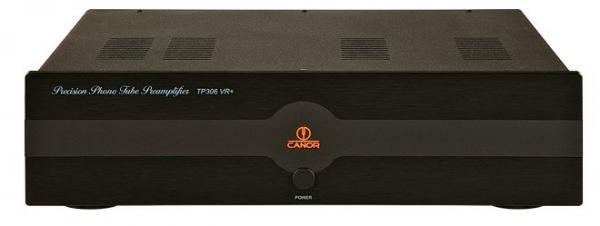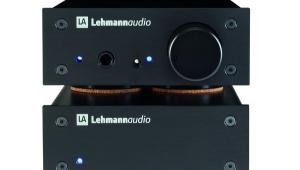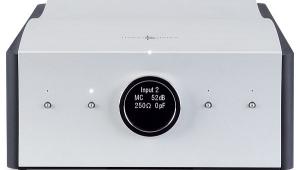Canor Tp306 Vr+ (£2750)

Naturally, the TP306 VR+ has the simplest fascia, as the only front-panel control is the on/standby button in the centre. When connected to mains power, LEDs show standby mode, muting while warming up, then unmuting.
Other adjustments are relegated to the back panel. But the facilities are comprehensive. There are separate pairs of input sockets for moving-coil and moving-magnet inputs, selected via a toggle switch, the layout reflecting the dual-mono construction inside.
Accessed by removing a small cover plate, DIP switches provide all the loading options you could wish for: MC sensitivities at 54dB, 60dB or 66dB of gain; a set of six for load impedance. For MM, four switches provide capacitative loading – ten different settings cover the range from 100pF up to 890pF. While the familiar 6922 (E88CC) tube is used as an output buffer, the combined MM/MC RIAA gain stage uses the bigger 6SL7 double-triodes, each run with its two triode sections connected in parallel. Transformers to provide the necessary step-up ahead of the MM input stage come from the leading specialist Lundahl of Sweden.
Canor’s signature innovation is its Milling Technology where areas of the circuit board are precisely removed, leaving only the wanted track areas between key components. The result, says Canor, is ‘to give the circuit similar characteristics to one direct wired with air-dielectric cables.’
A sense of space
We spent the most time listening to a Roksan Shiraz; MMs to hand included a budget Ortofon 2M Red, Rega Exact and the Goldring-based Roksan Corus Silver. Hans Richter-Haaser in Beethoven’s Fourth Piano Concerto [CfP] was captivating, as the Canor gave the sound a pleasing transparency. The piano shone out with sparkle and definition. The orchestral sound was inviting too, with a real feeling of scale and perspective.
For a shot of rhythm’n’blues, we put on Albert King’s 1968 Live Wire Blues Power [Stax]. With this lucid phono stage you could feel the solid presence of Albert and his band on a stage, and at the same time sense the huge space around them. The image was so stable that its power never overwhelmed the system’s ability to portray the venue.
Moving on to The King James Version [Sheffield Lab LAB 3] the Canor again seemed to allow a strikingly integrated and coherent sound. On ‘Corner Pocket’ the James band swung in happy harmony, though it seemed that the Canor laid bare that momentary slight equivocation over the tempo, not to mention the gain-riding by the engineer. This became all the more apparent by comparison with the following tracks, as the band plays absolutely as one on ‘Lara’s Theme’ and then gives a truly fabulous performance on ‘Cherokee’.
Turning to MM, the sound was still fine, lively and quite invigorating, but no longer had that tactile solid quality in the bass or the convincing dynamic impact from the drums that we’d enjoyed through the MC input.
We then put on Jennifer Warnes’ album of Leonard Cohen songs, Famous Blue Raincoat [Classic Records]. On the title track, the torchy tenor sax was pleasantly soft-edged while the rhythm section and strings provided a velvet cushion for the singer’s fabulously expressive vocal. On ‘Joan Of Arc’, Jenny and Lenny were both right there in front of you, and producer Roscoe Beck’s slide guitar was spine-chillingly effective: snaky and scaly.
Verdict
Built in a way that inspires confidence, and behaving impeccably in use, the Canor TP306 VR+ certainly puts up a strong argument for tubes. It has a hint of character and can make most solid-state phono amps sound a little cool and almost impersonal.
Originally published in the 2013 Yearbook




















































